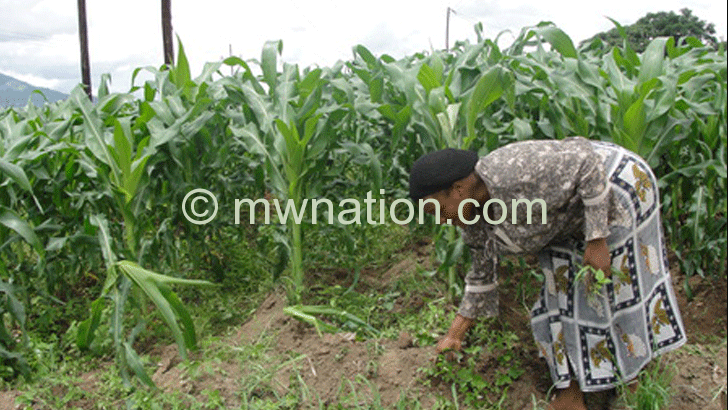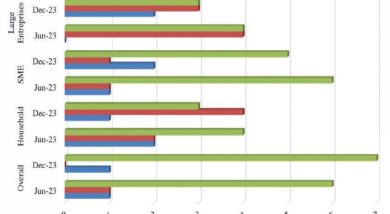Rethinking farmers’ market linkages
For many years, Malawian farmer organisations have struggled to not only organise farmers in cooperatives, but also to ensure that smallholder farmers access better extension services for better and improved harvests.
Because of such shortfalls, smallholder farmers have found it difficult to sustainably feed their households let alone produce for commercial purposes.

It is estimated that less than half of the population of farmers produce for commercial purposes despite agriculture being the main stay of most economies in Africa, especially Malawi.
However, through National Smallholder Farmers Association of Malawi (Nasfam) project on the promotion of smallholder farmer linkages to agro-processors through an anchor farm model, over 2 000 farmers in Mchinji have managed to not only produce for commercial purposes, but also process and export to regional markets.
Kilinesi Mawele is a 72-year-old mother of nine who, for the past three years, has been taking part in Nasfam’s anchor farm model project which started in 2015.
She grows groundnuts on the anchor farm project, but also has a three hectare back home where she grows, maize, groundnuts as well as soya beans.
“My husband is old and can barely lift a hoe and dig, and so I do all the farm work with my children. I joined this project three years ago and have benefited greatly, more than words can ever explain,” she says.
According to Mawele, her household has tremendously changed and fellow villagers have now re-integrated her back in the village as she is now reliable.
Mawele said during the first year, she harvested seven bags of shelled groundnuts on her 0.4 hectare. With the funds she got, she bought three bags of fertiliser as well as pay school fees for her four children currently in secondary school.
“I renovated my house and bought iron sheets because I was able to buy fertiliser, I revived my three hectare which is near my home, as we are talking now, I have maize from two seasons, something which has never happened before.
“For years, I have lived in dire poverty, having no food, forcing my children to drop out of school. Even my friends would shun me because they said I liked to beg, but with this project all that has changed and my home has transformed and most importantly, all my children are in school,” she says.
Another farmer who is taking part in the project is group village head Bester
Banda. She, too, has transformed her household due to the sales she has made from soya beans.
“I am hopeful that this year, things will even be better, the rains are favourable. Last year, it was not that much good because we had dry spell in some parts.
“As smallholder farmers, we get 30 kilogrammes [kg] of basic seed and we are supposed to pay back 75kg of certified seed. This year, I am expecting to harvest not less than 20 bags of soya beans. I have already bought chickens, goats as well as renovate my home using the proceeds which I got from my farming business,” she says.
Mawele and Banda are among the 2 000 farmers who were selected totake part in the Nasfam anchor farm project which is taking place in Mchinji.
According to the farm manager Cosmas Kafwafwa, the project has over 180 hectares and is being implemented in two phases.
“There are over 500 farmers who were picked from various cooperatives in villages surrounding Kawerawera Farm. These are growing groundnuts and soya beans on the farm and another group grows these crops outside the farm and we refer to these as out-growers,” he says.
Kafwafwa said both groups are accorded the same extension services, only that the in-growers are charged for the services rendered such as farm machinery use.
“For example, we cultivate the land for them, we supply them with inputs as well as insecticides which they are supposed to pay at the end of the season. Usually, it comes up to around K23 216 a season. In addition, this is like a revolving fund, such that the seed they return is loaned back in the following season to out-growers who then produce grain,” he says.
Nasfam chief executive officer Dyborn Chibonga says the farm model, which is being run in collaboration with Malawi Government is part of Enhanced Integrated Framework (EIF), which is a multi-donor programme. It supports Least Developed Countries (LDCs) to be more active players in the global trading system by helping them tackle supply-side constraints to trade.
“In this way, the programme works towards a wider goal of promoting economic growth and sustainable development and helping to lift more people out of poverty. The approach helps farmers to work together while enjoying the benefits of commercial farming techniques, including access to tractors for ripping land as well AS access to inputs.
“Using this anchor model, smallholders are producing crop stands that look like commercially managed stands. They are producing yields close to fully commercial ideals. They are seeing real rewards and are able to improve their standard of living and re-invest proceeds into their own livelihoods and fields outside the farm, using techniques they have learned on the farm,” he said.
According to Chibonga, the seed in-growers produce is used to provide inputs to out-growers around the farm who produce grain which is what is purchased and traded by Nasfam’s commercial arm.
“Nasfam has more land in Kasungu and in Mbalachanda [in Mzimba], and wants to expand this concept. However, funding is needed to expand operations. Once fully set up, the aim is to run such farms on a self-sustaining basis, using donor support only for initial set-up and expansion.
“At the moment, Nasfam sold the soya grain produced last year to Botswana, accessing export markets and generating foreign exchange for Malawi. Groundnuts were used in some of Nasfam’s Nasnuts and raw Farma Nut product lines and are also sold both locally and internationally in bulk,” he said.
So far, the project beneficiaries have produced 462.83 metric tonnes of oil seeds of which 342.49 metric tonnes were marketed through a community-led market centre and a total of 3 637 farmers have benefited from the project to date.




